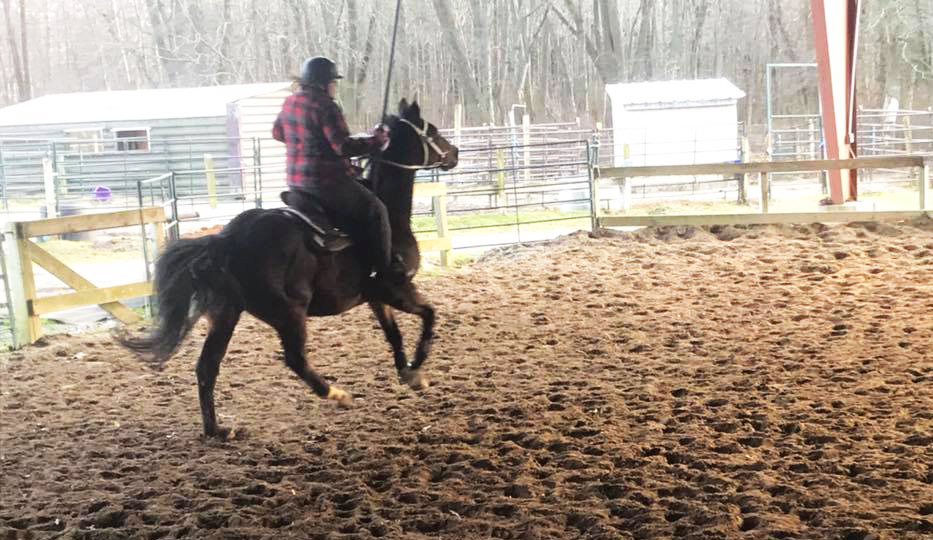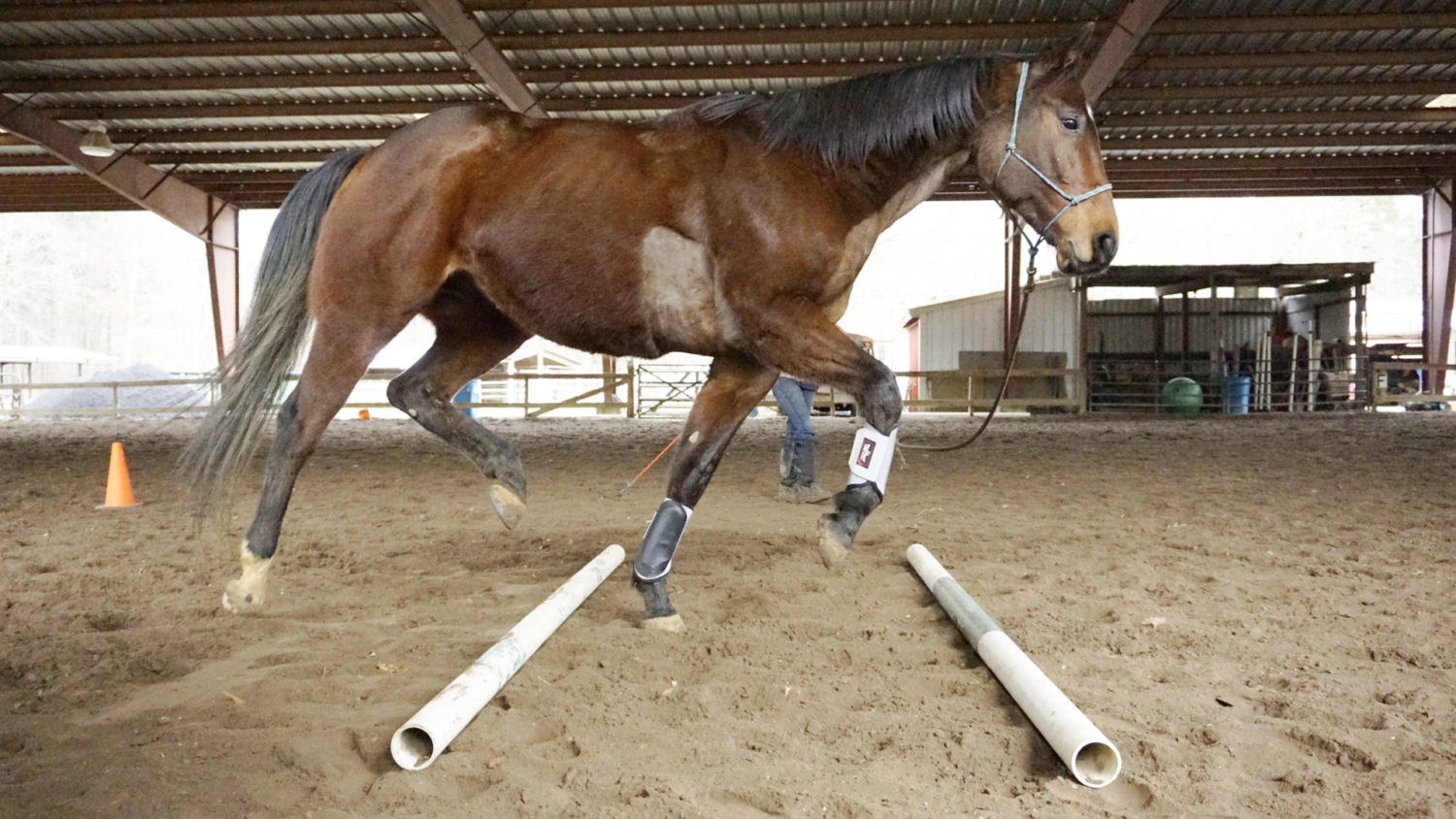After a two week hiatus for the annual holiday pilgrimage to my parents’ house in Northern New York, I’m back at the farm and that can only mean one thing for my boy Sure Prize aka Indy… it’s back to work!
It’s a struggle to be consistent this time of year between bad weather and holidays. And you know what? It’s all good. I take ownership of the inconsistency and the best I can expect is some inconsistency on my horse’s end. I can’t fault the horse for that. And thankfully with the New Year we all get to turn a fresh new page together.
It’s been less than a week since I’ve been back from the Adirondacks and we’ve already gotten through 4 solid workouts with the boy, some lasting as long as 3-4 hours, including his first introduction to the ever fearful tarp monster!

We’re still working on developing calm, steady rhythms at all three gaits and despite what feels like a totally inconsistent work effort in December, I was pleased to see Indy mostly picked up where we’d left off. His walk/trot and trot/canter transitions are becoming more controlled and rather than bracing tightly with his head up in the air and hollowing out his back, he’s beginning to start stretching down and lift his shoulders and belly sooner and with more regularity. We’re building towards collection, even if we’re a bit out of practice.
In the 4 sessions we’ve had since I’ve been back we’ve also spent a lot more time doing patterns and work over the poles. Even if it’s something as rudimentary as throwing a circle in every corner of the arena and pushing him at a working trot into keeping pace for 5-10 minutes before changing direction and doing the same thing. It’s helped bring his focus to the task at hand – listening to my reins and legs, steering, bending, straightening, all while maintaining a consistent rhythm for longer and longer periods of time. You might not think that forcing yourself to work off a pattern and forcing your horse to maintain a steady pace would have a such a big upside, but it does. It occupies their minds in a way that we can’t wrap ours around. It gives them a job that’s asking more of them than just to stay on the rail and go around in circles. Each time I’m asking for him to work just a little longer than before to continue building where we’ve left off.

On top of our workouts under saddle we’ve also introduced some other de-spooking practice including a round of jousting with some barn friends and the ever-dreaded tarp. Mr. Sure Prize handled the jousting quite well but as it turns out the poor boy is rather terrified of tarps. That just means I found my favorite teaching tool for the next month. Being afraid of something as new as a tarp comes as absolutely no surprise when you consider their nature as a prey animal. It’s also never been the subject of focus during his career on the track, meaning that in a sense he’d been left to fend for himself in every scary tarp-like situation up until now.
During our introduction to the tarp or really any spooky obstacle, we’re working on building his confidence, conditioning him not to react and rush to his own judgments and instead to look to us and ask us what we want from the situation. Hypothetically that should be true both on the ground and in the saddle. With a skiddish horse on the ground this can be challenging when all the horse wants to do is get away from whatever the scary thing is and the last thing he wants to do is listen to your aids. When the horse backs up and gets totally sidetracked by the tarp on the ground (which, yes, Indy did on day 2 when we dragged it out) what he’s doing is answering his own question and rushing to judgment — he doesn’t like it and doesn’t want to be near it but for all he should care or know, that tarp isn’t even going to be used for him. We have to get him to fight that flighty instinct and teach him to investigate the worry and look to us for direction and listen to our aids regardless of whatever the scary thing is.
What we’re looking for during this exercise isn’t black and white, it’s progress that shows as variations of gray. It’s not as simple as him saying “no” to something we want him to say “yes” to. It’s getting him to think “maybe” and rewarding that thought with release every time he does. Truth be told there is no quick or easy fix to this. It’s a long process that requires hours of exposure and consistency, not to mention a try and try again kind of attitude where we introduce said scary object, wait for feedback, ask for a little more, and then release before trying and asking again for a little more than that. Rinse and repeat, again and again, and reward each little effort and every semblance of progress.
This really boils into a giant trust building exercise whether you’re on the ground or in the saddle and our goal with this exercise each time is to use what they’re concerned with as a learning experience and teaching tool. If you can teach your horse that game, then realistically this exercise will translate to any spook-worthy situation ranging from loud noises to tarps, tires, and livestock. When practicing this with Indy, he went from being visibly concerned with the tarp on the lunge line half way across the arena to several minutes later eventually sniffing the tarp when asked and finally jumping over it without being asked. You don’t get the “yes” without first getting to “maybe”.
Calm, consistent efforts can produce huge changes if only we reward the smaller gains first!
1

